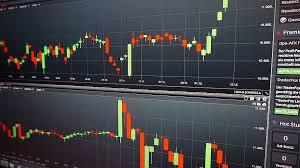Technical analysis for stock trading attempts to determine changes in investor sentiment through analyzing the technical details of trading, both recent and historical. The numbers will indicate how investors feel about economic and political conditions, and about markets, sectors, industries, and individual stocks. Knowing a change in sentiment allows early trading to capture profits in a new trend.
Technical analysis is actually divided into three branches, according to Martin J. Pring and as described in his book Technical Analysis Explained, 4th Edition (2002):
- Sentiment Indicators
- Flow-of-Funds Indicators
- Market Structure Indicators
Sentiment Indicators Reflect Insider Actions
What Pring calls sentiment indicators “monitor the actions of different market participants, such as insiders, mutual funds managers and investors, and floor specialists.” [page 3]. Emotions of traders, even of professional traders, will swing with the market. At market bottoms and market tops, a change in direction of price occurs because these market professionals decided the price had moved beyond a valid price based upon economic and political conditions.
The assumption is that a broad group of investors will behave the same from one market cycle to the next. Experience has shown that market insiders tend to be correct as a group at market turning points (though individual insiders might be wrong). Of course, since the trading of these people contribute significantly to the volume and the total shares traded, they tend to drive the market rather than respond to it, so of course they would be correct as a group.
Trades by many of these people in the stocks they have personal knowledge of must be documented by special forms submitted to the Securities and Exchange Commission. By monitoring these forms, a sense of insider expectations can be obtained. This is, however, a lot of work, even in the computer era and the information age.
Flow-of-Funds Indicators Show Financial Positions of Investor Groups
Flow-of-fund indicators analyze “the financial position of various investor groups in an attempt to measure their capacity for buying or selling stocks.” [page 4]. The stock markets change price as money either moves into the market (i.e. more people decide to use available cash to purchase stocks) or moved out of the market (i.e. more people decide to sell their equities and keep their money in cash. Since each stock transaction has a buyer and a seller, the flow of money into the market is always equal to that flowing out.
Flow-of-funds indicators measure such things as the amount of cash being held by mutual funds, or amount of cash held by other types of financial institutions: endowment funds, pension funds, insurance companies, bank trust accounts, hedge funds, and others.
This type of indicator measures the amount of money that is available for making stock purchases. If a lot of money is available, say in a pension fund, the fund manager is more likely to purchase some stocks than if the cash position of the fund is small.
A disadvantage of these indicators is the limited amount of data available, especially to the part time individual trader. Also, the mere presence of cash in an account is no guarantee that the person controlling the cash will want to purchase a stock, or sell a stock to increase the amount of cash on hand. So the value of this type of indicator is limited.
Market Structure Indicators Form the Heart of Technical Analysis
When most people think or talk about technical analysis, they are really talking about what Pring calls market structure indicators, which “monitor the trend of various price indexes, market breadth, cycles, volume, and so on in order to evaluate the health of the prevailing trend.” [page 5] Hundreds of these types of indicators have been developed by market professionals.
This type of indicator use readily available data to tabulate and plot stock or index prices and the volume of shares that exchange hands. Stock prices tend to keep moving in the direction they are going until something happens to change investor sentiment and expectations. Then the price reverses or for a time remains stagnant as investors as a whole try to determine what the value of a stock or a broader market is. Such indicators as moving averages, stochastics, money supply, and many more can tell the technical analyst that the mood has changed and something new is about to take place.
Of the three branches of technical analysis, only market structure indicators are readily available to the individual investor. These can be studied, analyzed, and evaluated to improve the success of trading stocks.
